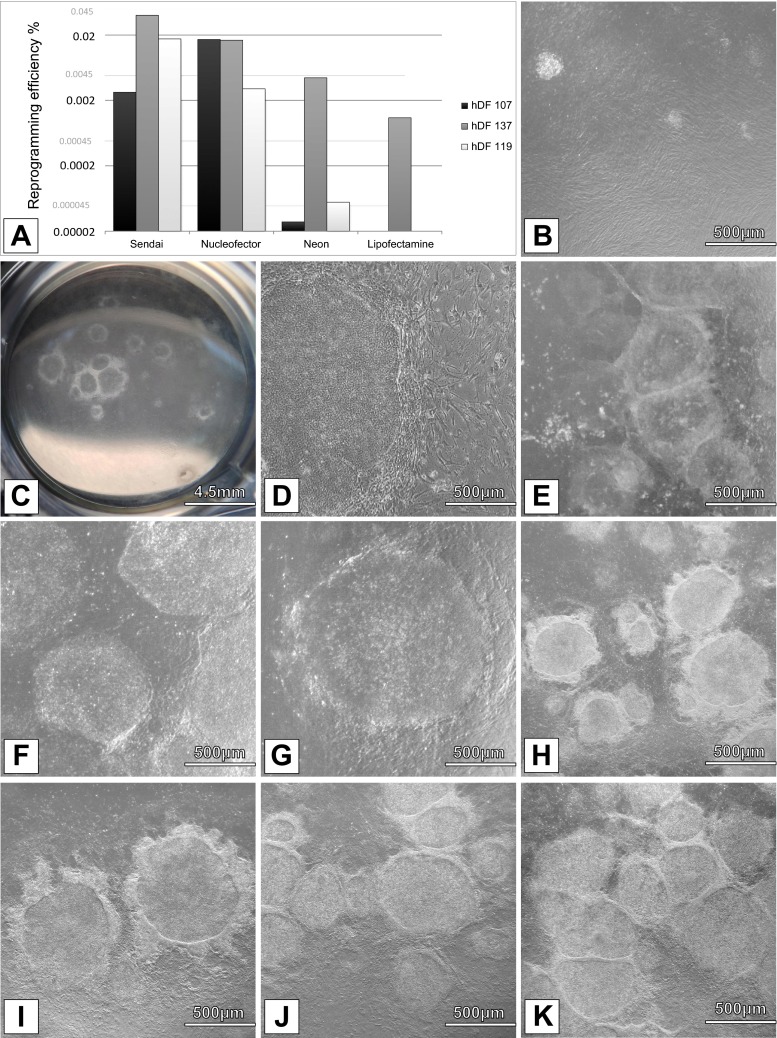Fig. 1.
Human fibroblast reprogramming. Human dermal fibroblasts (hDF) from three different patients (hDF 107, 119 and 137) were reprogrammed into iPSC lines by using four different methods (Sendai virus, Nucleofector, Neon transfection system and Lipofectamine 3000) to deliver the reprogramming plasmids. Average reprogramming efficiency of the four methods used is presented for each hDF (a). Reprogramming efficiency is expressed in nascent colonies per cells transduced/transfected and the scale in the plot is logarithmic. Pictures of iPSCs colonies at different passage numbers are shown, each representative of a different condition: colonies are starting to grow on top of MEFs two weeks after transfection of hDF 137 (b), and colonies at passage 1 are shown in (c); Cytotune Sendai Reprogramming kit, at passage 9 from hDF 119 (d); Nucleofector Transfection System, at passage 4 from hDF 107 (e), hDF 119 (f) and hDF 137 (g); Neon Transfection System at passage 8 from hDF 107 (h), passage 5 from hDF 119 (i) and hDF 137 (j). iPSCs obtained from hDF 137, at passage 6 with Lipofectamine 3000 (k)

